General
The Ultimate Guide to Finding the Best Flooring for Your Home Remodel
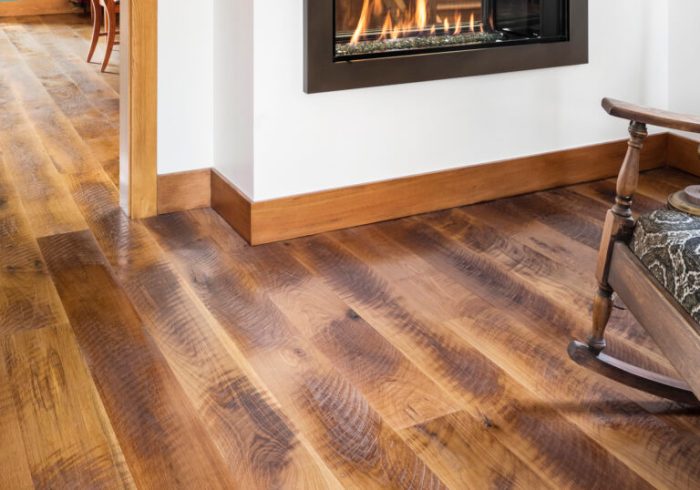
Embark on a journey to discover the ideal flooring options for your home remodel. From hardwood to vinyl, we'll explore the pros and cons of each type, helping you make an informed decision that suits your lifestyle and budget.
As we delve deeper into the world of flooring, you'll uncover valuable insights on durability, maintenance, and the impact of your choice on the overall aesthetics of your home.
Types of Flooring
When it comes to choosing the right flooring for your home remodel, there are various options to consider. Each type of flooring has its own unique characteristics, pros, and cons that can impact the overall look and feel of a room.
Let's explore the most popular types of flooring available in the market today:
Hardwood Flooring
Hardwood flooring is a classic choice that adds warmth and elegance to any space. It is durable and can last for decades with proper care. However, hardwood flooring can be expensive to install and may require refinishing over time to maintain its appearance.
Laminate Flooring
Laminate flooring is a more affordable alternative to hardwood that mimics the look of wood. It is easy to install and maintain, making it a popular choice for homeowners on a budget. However, laminate flooring is not as durable as hardwood and may not withstand heavy foot traffic or moisture.
Vinyl Flooring
Vinyl flooring is a versatile option that comes in a wide range of styles, colors, and patterns. It is water-resistant and easy to clean, making it ideal for high-traffic areas like kitchens and bathrooms. However, vinyl flooring may not have the same resale value as hardwood or tile.
Tile Flooring
Tile flooring is known for its durability and low maintenance requirements. It is available in a variety of materials such as ceramic, porcelain, and natural stone, offering endless design possibilities. However, tile flooring can be cold underfoot and may require professional installation for a flawless finish.
Carpet Flooring
Carpet flooring is a soft and cozy option that provides insulation and noise reduction. It comes in a wide range of colors and textures to suit any decor style. However, carpet can trap dust and allergens, requiring regular cleaning and maintenance to keep it looking fresh.Consider the durability, maintenance requirements, and overall aesthetic appeal of each type of flooring before making a decision for your home remodel.
Each type has its own advantages and considerations that can impact the comfort and functionality of your living space. Make sure to choose the flooring that best suits your lifestyle and design preferences.
Factors to Consider
When embarking on a home remodel, choosing the right flooring is a crucial decision that can greatly impact the overall look and feel of your space. Several factors should be taken into consideration to ensure you select the best flooring option that suits your needs and lifestyle.
Foot Traffic, Moisture Levels, and Budget
It is essential to consider the amount of foot traffic in the area where the new flooring will be installed. High-traffic areas like entryways and living rooms may require more durable flooring options such as hardwood or luxury vinyl, while bedrooms may be suitable for carpeting.Moisture levels are another important factor to consider, especially in areas like bathrooms and kitchens.
Choosing moisture-resistant flooring materials like tile or laminate can help prevent damage and maintain the longevity of your floors.Budget constraints should also be taken into account when selecting flooring. It's important to find a balance between cost and quality to ensure you get the best value for your investment.
Room Functionality
Different rooms in your home serve different purposes, and the functionality of the space should influence your choice of flooring. For example, in the kitchen where spills and stains are common, easy-to-clean and durable flooring like tile or luxury vinyl may be the best option.
In the bathroom, moisture-resistant flooring like porcelain tile or vinyl is ideal.In the living room, where comfort and aesthetics are key, options like hardwood or carpeting can create a cozy and inviting atmosphere. Consider the specific needs of each room to determine the most suitable flooring choice.
Impact on Aesthetics and Resale Value
The flooring you choose can significantly impact the overall aesthetics of your home. Light-colored flooring can make a space feel larger and brighter, while dark flooring can add a sense of warmth and coziness. Consider the existing decor and style of your home when selecting flooring to ensure a cohesive look.Furthermore, the type of flooring you choose can also affect the resale value of your home.
High-quality and durable flooring options like hardwood or tile can increase the appeal of your home to potential buyers and potentially raise its market value.
Installation Process

When it comes to installing different types of flooring, the process can vary depending on the material being used. Whether you choose hardwood, laminate, vinyl, tile, or carpet, each type has its own specific steps for installation.
Hardwood Flooring
- Acclimate the hardwood planks to the room for a few days before installation.
- Prepare the subfloor by ensuring it is clean, dry, and level.
- Start installation from the longest wall, using a nail gun or adhesive to secure the planks.
- Finish by installing baseboards or trim to cover expansion gaps.
Laminate Flooring
- Prepare the subfloor by cleaning and leveling it.
- Install underlayment to provide cushioning and moisture protection.
- Click and lock the laminate planks together, starting from one corner of the room.
- Trim the edges for a clean finish.
Tile Flooring
- Prepare the subfloor by ensuring it is clean and flat.
- Apply mortar or adhesive and lay down the tiles in a pattern of your choice.
- Grout the tiles and seal the grout lines for durability.
- Allow the tiles to set before walking on the floor.
Carpet Flooring
- Stretch and secure the carpet padding to the subfloor.
- Roll out the carpet and trim it to fit the room dimensions.
- Use a power stretcher to stretch the carpet and attach it to tack strips along the edges.
- Finish by trimming excess carpet and tucking it under baseboards.
DIY vs. Hiring Professionals
- DIY installation can save money but may require more time and effort.
- Professionals have the expertise and tools to ensure a faster and more precise installation.
- Consider your skill level and the complexity of the flooring material before deciding whether to DIY or hire professionals.
Common Challenges and Solutions
- Uneven subfloors can cause issues with installation. Use leveling compounds or plywood to even out the surface.
- Moisture can damage certain types of flooring. Install moisture barriers or address any underlying moisture issues.
- Matching patterns or aligning seams can be challenging. Take your time and use spacers or guidelines to ensure a uniform look.
Maintenance and Care
When it comes to maintaining and caring for your flooring, it is essential to follow specific guidelines to ensure the longevity and quality of your investment. Different types of flooring require different maintenance routines and care, so let's dive into some tips and tricks to keep your floors looking their best.
Hardwood Flooring
- Regularly sweep or vacuum to remove dirt and debris that can scratch the surface.
- Use a damp mop with a hardwood floor cleaner to clean the floors, avoiding excess water.
- Place felt pads under furniture legs to prevent scratches and dents.
- Avoid wearing high heels or shoes with sharp edges that could damage the floors.
- Consider refinishing the floors every few years to maintain their shine and protect the wood.
Laminate Flooring
- Sweep or vacuum regularly to prevent dirt and grit from scratching the surface.
- Use a damp mop with a mild cleaner specifically formulated for laminate floors.
- Avoid using excessive water, as it can cause damage to the planks.
- Place mats at entryways to trap dirt and moisture before it reaches the floors.
- Wipe up spills immediately to prevent staining or warping of the laminate.
Tile Flooring
- Sweep or vacuum regularly to remove dirt and debris from the grout lines and tiles.
- Clean with a mild detergent and warm water, avoiding harsh chemicals that can damage the grout.
- Seal the grout lines annually to prevent staining and water damage.
- Use a soft brush or mop to clean textured tiles to avoid scratching the surface.
- Avoid dragging heavy furniture across the tiles to prevent scratches and cracks.
Carpet Flooring
- Vacuum regularly to prevent dirt and dust from settling deep into the fibers.
- Spot clean spills immediately with a carpet cleaner or a mixture of water and vinegar.
- Use carpet protectors under furniture legs to prevent crushing or indentations.
- Professional steam clean the carpets at least once a year to remove deep-seated dirt and stains.
- Rotate area rugs and furniture occasionally to prevent uneven wear patterns on the carpet.
Outcome Summary
In conclusion, choosing the right flooring for your home remodel is a crucial decision that can enhance both the beauty and functionality of your living space. With the knowledge gained from this guide, you're well-equipped to make a choice that elevates your home to new heights of style and comfort.
Top FAQs
What factors should I consider when choosing the best flooring for my home remodel?
Consider factors like foot traffic, moisture levels, and your budget to make an informed decision that suits your needs.
Is DIY installation recommended for all types of flooring?
While DIY installation can be suitable for some, complex flooring types like hardwood may require professional expertise.
How can I best maintain my chosen flooring to ensure longevity?
Regular cleaning, proper care, and addressing issues promptly can help maintain the quality and lifespan of your flooring.
General
Driveway Gate Cost Estimator: Factors, Pricing, and Tips
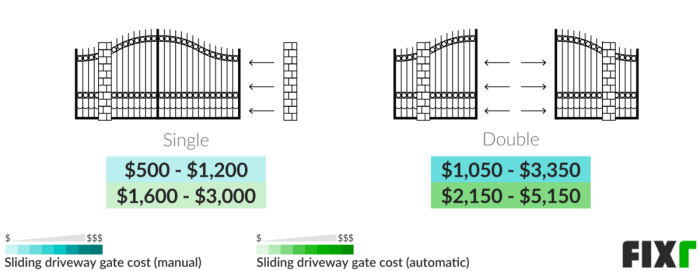
Exploring the costs associated with driveway gates can be a complex and detailed process. From materials to additional features, there are various factors that contribute to the overall estimation. Let's delve into the world of driveway gate cost estimation to understand the intricacies involved in this essential home improvement project.
As we navigate through the different aspects of driveway gate cost estimation, we will uncover valuable insights that can help homeowners make informed decisions when considering this upgrade for their property.
Factors affecting driveway gate cost estimation
When estimating the cost of a driveway gate, several factors come into play that can significantly impact the final price. These factors include the materials used, gate size and design complexity, additional features, and the choice between DIY installation and professional installation.
Materials Used for Driveway Gates
The material of the driveway gate plays a crucial role in determining the overall cost. Common materials used for driveway gates include wrought iron, steel, aluminum, vinyl, and wood. Each material comes with its own price point and maintenance requirements.
For example, wrought iron gates tend to be more expensive due to their durability and aesthetic appeal, while vinyl gates are more budget-friendly but may require more frequent maintenance.
Gate Size and Design Complexity
The size and design complexity of the driveway gate will also impact the cost estimate. Larger gates or gates with intricate designs will require more materials and labor, resulting in a higher price tag. Simple, standard-sized gates will generally be more cost-effective compared to custom-designed or oversized gates.
Additional Features
Adding features such as automation, intercom systems, decorative elements, or ornamental details can significantly increase the cost of a driveway gate. Automated gates, for example, require motors and sensors, while intercom systems add a level of convenience but come at an additional cost.
The more features you incorporate into your gate design, the higher the overall price will be.
DIY Installation vs. Professional Installation
Deciding between DIY installation and professional installation can also impact the cost of a driveway gate. While a DIY approach may initially seem more cost-effective, hiring professionals ensures proper installation, reducing the risk of errors and future maintenance costs. Professional installation may come at a higher upfront cost but can save you time and money in the long run.
Pricing breakdown for driveway gate components

When estimating the cost of a driveway gate, it's essential to consider the breakdown of costs for various components. This breakdown includes materials, additional components, gate styles, installation costs, and labor fees.
Materials Cost Breakdown
- Wood: $800 - $5,000
- Iron: $1,500 - $12,000
- Aluminum: $1,000 - $6,000
- Vinyl: $1,000 - $4,000
Additional Components Cost Breakdown
- Hinges: $20 - $200
- Locks: $50 - $300
- Sensors: $100 - $500
- Remote Controls: $50 - $400
Cost Variations Based on Gate Styles
- Sliding Gates: $1,500 - $10,000
- Swinging Gates: $800 - $6,000
- Bi-fold Gates: $2,000 - $12,000
Installation Costs and Labor Fees
- Average Installation Costs: $500 - $2,500
- Average Labor Fees: $50 - $100 per hour
Regional cost differences and considerations
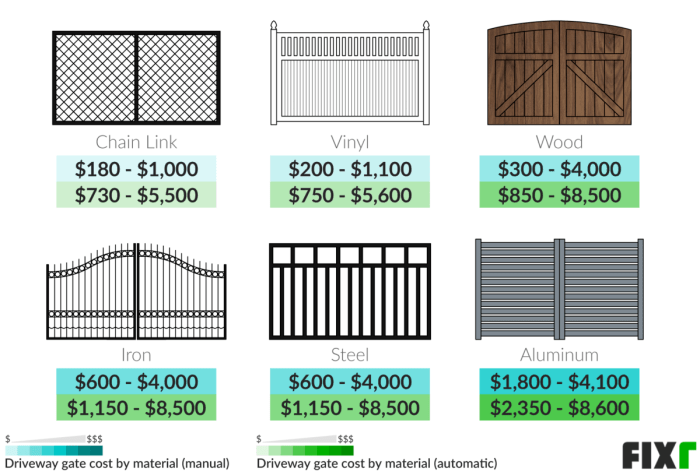
Location plays a significant role in determining the cost of driveway gate installation. Factors such as labor costs, material availability, climate, and terrain can all impact the overall estimate
Labor Costs and Material Availability
In some regions, labor costs may be higher due to demand or the cost of living. Additionally, the availability of certain materials can vary by location, affecting both pricing and installation timelines. For example, areas with limited access to specific gate materials may incur higher costs due to transportation expenses.
Climate and Terrain Impact
Regions with extreme weather conditions or challenging terrains may require additional considerations during installation. For instance, areas prone to heavy snowfall or high winds may need more robust gate designs for durability. Similarly, uneven terrains or rocky landscapes can complicate the installation process, potentially increasing labor costs.
Finding Local Contractors and Suppliers
To get accurate cost estimates tailored to your region, it's crucial to work with local contractors and suppliers. Local professionals are familiar with regional pricing trends and can provide insights specific to your area. Researching and comparing multiple quotes from local experts can help you make informed decisions and ensure that you receive competitive pricing for your driveway gate project.
Tips for accurate driveway gate cost estimation
Estimating the cost of a driveway gate accurately is crucial for homeowners looking to enhance their property's security and curb appeal. Here are some tips to help you navigate the process:
Step-by-step guide for homeowners to estimate driveway gate costs
When estimating the cost of a driveway gate, consider factors such as material, size, style, and automation. Begin by researching the average prices for different types of gates and their installation costs in your area.
How to factor in maintenance costs over the gate’s lifespan
Remember to account for maintenance costs when estimating the total cost of a driveway gate. Regular upkeep, repairs, and potential replacements should be factored into your budget to ensure the gate's longevity.
Insights on obtaining multiple quotes and negotiating with contractors
Seek quotes from multiple contractors to compare prices and services offered. Don't hesitate to negotiate with contractors to get the best deal possible. Ask about any discounts or promotions that may be available.
Ways to prioritize features within a budget for cost-effective gate solutions
Identify the essential features you need in a driveway gate and prioritize them within your budget. Consider options like manual vs. automatic gates, different materials, and additional security features to find a cost-effective solution that meets your requirements.
Ultimate Conclusion
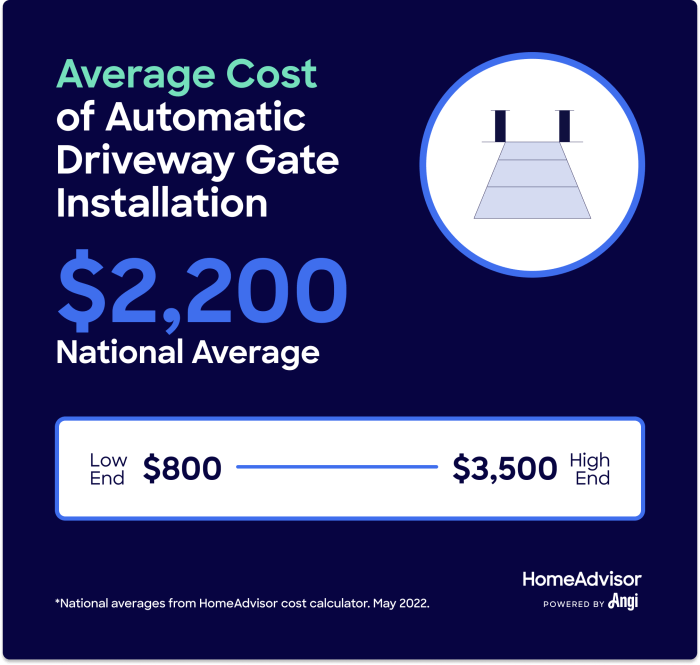
In conclusion, understanding the nuances of driveway gate cost estimation is crucial for anyone looking to enhance the security and aesthetics of their property. By considering the various factors and pricing breakdowns discussed, individuals can approach this project with confidence and clarity.
FAQ Section
What are the common materials used for driveway gates?
Driveway gates can be made of materials such as wood, iron, aluminum, or vinyl, each impacting the overall cost differently.
How does gate size influence cost estimates?
The larger the gate, the more materials and labor are required, resulting in higher cost estimates.
Is DIY installation cheaper than professional installation?
While DIY installation can save on labor costs, it may lack the precision and expertise of professional installation, potentially leading to additional expenses in the long run.
How can homeowners factor in maintenance costs for driveway gates?
It's essential to consider the long-term maintenance requirements of different materials used for driveway gates to estimate costs accurately.
What are some tips for negotiating with contractors for driveway gate projects?
Homeowners can obtain multiple quotes from different contractors, compare the details, and negotiate based on the scope of work and features desired within their budget.
General
Exploring Energy Efficient Home Exteriors: A Guide to Cutting Costs and Going Green

Delving into the realm of energy efficient home exteriors, this article sheds light on the importance of sustainable living and cost-effective solutions. From materials to design strategies, discover how you can enhance your home's efficiency while reducing your environmental footprint.
Importance of Energy-Efficient Home Exteriors
Energy-efficient home exteriors play a crucial role in reducing utility costs and promoting environmental sustainability. By utilizing energy-efficient materials and designs, homeowners can enjoy a range of benefits while contributing to a greener future.
Reduced Utility Costs
- Energy-efficient home exteriors help in reducing energy consumption, leading to lower electricity and heating bills.
- Proper insulation and sealing of windows and doors prevent energy wastage, resulting in cost savings over time.
Environmental Sustainability
- Energy-efficient exteriors reduce carbon footprint by decreasing energy consumption and reliance on non-renewable resources.
- By using sustainable materials and designs, homeowners can minimize environmental impact and contribute to a healthier planet.
Benefits of Energy-Efficient Materials and Design
- Energy-efficient materials like high-performance windows and insulation improve indoor comfort and air quality.
- Well-designed exteriors can enhance curb appeal, increase property value, and create a more sustainable living space.
Energy-Efficient Exterior Materials
When it comes to energy-efficient home exteriors, the choice of materials plays a crucial role in minimizing energy consumption and maximizing sustainability. Various types of energy-efficient materials are available in the market, each with its own set of benefits and considerations.
Types of Energy-Efficient Exterior Materials
- Insulated Vinyl Siding: Insulated vinyl siding not only provides excellent insulation but also helps in reducing energy costs by maintaining a consistent indoor temperature. It is durable, low-maintenance, and comes in a variety of colors and styles.
- Fiber Cement: Fiber cement siding is a durable and low-maintenance option that offers great thermal insulation properties. It is resistant to rot, fire, and pests, making it a long-lasting choice for energy-efficient home exteriors.
- Wood Cladding with Thermal Breaks: Wood cladding with thermal breaks combines the natural beauty of wood with added insulation to improve energy efficiency. By incorporating thermal breaks, this material helps prevent heat loss and enhance the overall insulation of the home.
Durability and Maintenance of Energy-Efficient Exterior Materials
Energy-efficient exterior materials are designed to be durable and require minimal maintenance to ensure long-term performance. Regular cleaning and inspections can help prolong the lifespan of these materials, reducing the need for repairs or replacements.
Innovative Materials for Enhancing Energy Efficiency
- Reflective Roofing Materials: Reflective roofing materials, such as cool roofs, help reduce heat absorption and lower cooling costs by reflecting sunlight away from the home. These materials can significantly improve energy efficiency in warmer climates.
- Insulated Concrete Forms (ICFs): Insulated concrete forms provide superior insulation and energy efficiency by creating a continuous thermal barrier. They are strong, durable, and offer excellent soundproofing properties in addition to energy savings.
- Spray Foam Insulation: Spray foam insulation is a versatile material that can be applied to roofs, walls, and foundations to improve energy efficiency. It forms a tight seal, preventing air leakage and reducing heating and cooling costs.
Design Strategies for Energy-Efficient Home Exteriors
When it comes to maximizing energy efficiency in home exteriors, incorporating key design principles is essential. From proper insulation to strategic landscaping, there are various elements to consider in creating an energy-efficient exterior design. Let's delve into some of the key strategies below
Landscaping Integration
Landscaping plays a crucial role in energy-efficient exterior design. By strategically placing trees, shrubs, and other vegetation around your home, you can provide natural shade during hot summer months, reducing the need for excessive air conditioning. Additionally, well-placed landscaping can act as a windbreak during colder seasons, minimizing heat loss and reducing heating costs.
Insulation, Windows, and Shading Techniques
Insulation is a fundamental component of energy-efficient home exteriors. Properly insulating walls, roofs, and floors can significantly reduce heat transfer, keeping your home cooler in the summer and warmer in the winter. Windows also play a key role in energy efficiency, with double or triple-pane windows providing better insulation than single-pane alternatives.
Additionally, using shading techniques such as awnings, overhangs, or blinds can help block out excessive sunlight, reducing the need for air conditioning and lowering energy consumption.
Technology Integration for Energy-Efficient Home Exteriors
Smart technologies play a crucial role in enhancing energy efficiency in home exteriors. By utilizing innovative solutions, homeowners can reduce their energy consumption and environmental impact. Let's delve into the use of various eco-friendly technologies and automation systems that optimize energy efficiency in home exteriors.
Solar Panels
Solar panels are a popular choice for homeowners looking to harness renewable energy. By installing solar panels on the roof or exterior walls of a house, residents can generate electricity from sunlight. This clean energy source not only reduces reliance on traditional power grids but also lowers energy bills over time.
Rainwater Harvesting
Rainwater harvesting systems collect and store rainwater for various household uses, such as watering gardens or flushing toilets. By incorporating rainwater harvesting into home exteriors, homeowners can conserve water resources and reduce their reliance on municipal water supplies. This sustainable practice also helps to mitigate stormwater runoff and erosion.
Automation and Monitoring Systems
Automation and monitoring systems utilize sensors, timers, and smart devices to optimize energy consumption in home exteriors. For example, automated lighting systems can adjust brightness levels based on natural light conditions, while smart thermostats can regulate indoor temperatures efficiently. By integrating these technologies, homeowners can achieve greater energy savings and environmental benefits.
Wrap-Up

In conclusion, energy efficient home exteriors offer a blend of practical benefits and eco-conscious choices. By implementing the right materials, design techniques, and technologies, you can create a space that is not only energy-efficient but also environmentally friendly. Explore the possibilities and make your home a beacon of sustainability.
Helpful Answers
How do energy-efficient exteriors reduce utility costs?
Energy-efficient exteriors help regulate temperature, reducing the need for excessive heating or cooling, thus lowering utility bills.
What are some innovative materials for energy-efficient home exteriors?
Examples include insulated siding, cool roofs, and low-emissivity windows that enhance energy efficiency.
How can landscaping contribute to energy-efficient exterior design?
Strategic placement of trees and shrubs can provide natural shade, reducing the need for cooling systems during hot weather.
What smart technologies can optimize energy efficiency in home exteriors?
Smart thermostats, automated lighting systems, and energy monitoring devices can help regulate energy usage effectively.
General
Fire Damage Restoration Services: Restoring Properties After the Flames

Exploring the world of fire damage restoration services, this article delves into the crucial process of restoring properties post-fire. From the importance of professional assistance to the common causes of fire damage, let's uncover the key aspects of this essential service.
Overview of Fire Damage Restoration Services
Fire damage restoration services involve the process of repairing and restoring properties that have been affected by fire. This includes cleaning up the damage, removing debris, repairing structural elements, and eliminating smoke odor. It is crucial to seek professional fire damage restoration services to ensure a thorough and safe restoration process.
Importance of Professional Fire Damage Restoration
Professional fire damage restoration experts have the knowledge, experience, and equipment to effectively restore properties after a fire. They can assess the extent of the damage, create a comprehensive restoration plan, and execute the necessary repairs efficiently. Additionally, professionals can address safety concerns, prevent further damage, and ensure that the property is restored to its pre-fire condition.
Common Causes of Fire Damage
- Electrical Malfunctions: Faulty wiring, overloaded circuits, and malfunctioning appliances can lead to electrical fires.
- Cooking Accidents: Unattended cooking, grease fires, and flammable materials near stoves can cause kitchen fires.
- Smoking: Careless smoking habits or improper disposal of cigarettes can result in fires.
- Heating Systems: Malfunctioning furnaces, space heaters, or fireplaces can spark fires if not properly maintained.
- Candles: Left unattended or placed too close to flammable materials, candles can cause fires.
- Natural Disasters: Wildfires, lightning strikes, or earthquakes can also lead to fire damage that requires restoration services.
Process of Fire Damage Restoration
When it comes to fire damage restoration, the process involves several key steps to ensure that the property is effectively cleaned and restored to its pre-fire condition. Professionals play a crucial role in assessing the extent of the damage and determining the best course of action to take.
Various techniques are employed to clean and restore fire-damaged properties, ranging from soot and smoke removal to structural repairs.
Assessment of Fire Damage
Professionals first assess the extent of the fire damage, including damage caused by flames, smoke, and soot. They inspect the property thoroughly to determine the areas affected and the severity of the damage. This assessment helps in developing a comprehensive restoration plan tailored to the specific needs of the property.
Cleaning and Restoration Techniques
- Smoke and Soot Removal: Professionals use specialized equipment to remove smoke residue and soot from surfaces throughout the property. This helps eliminate odors and prevent further damage.
- Structural Repairs: Damaged structures are repaired or replaced to restore the property's integrity. This may involve repairing walls, floors, ceilings, and other structural components.
- Deodorization: Techniques such as ozone treatment or thermal fogging are used to eliminate smoke odors from the property, ensuring a clean and fresh environment.
- Content Cleaning: Personal belongings and furniture are cleaned, deodorized, and restored to their pre-fire condition whenever possible.
- Final Inspection: Once the restoration process is complete, a final inspection is conducted to ensure that the property meets industry standards and is safe for occupancy.
Equipment and Tools Used in Fire Damage Restoration
When it comes to fire damage restoration, having the right equipment and tools is crucial to effectively restore a property back to its pre-fire condition. Here are some essential tools used in the fire damage restoration process:
1. Air Scrubbers
Air scrubbers are essential for removing smoke odor and contaminants from the air. These machines use HEPA filters to capture tiny particles and clean the air, improving air quality in the property.
2. Dehumidifiers
Dehumidifiers are used to remove excess moisture from the air and surfaces, preventing mold growth and further damage. They help in drying out the affected areas efficiently.
3. Thermal Foggers
Thermal foggers are used to dispense deodorizers and neutralizers into the air to combat smoke odors. The fog penetrates into cracks, crevices, and other hard-to-reach areas to eliminate odors effectively.
4. Ozone Generators
Ozone generators are used to break down smoke molecules and eliminate odors. They are effective in removing stubborn odors caused by smoke and fire damage.
5
. Moisture Meters
Moisture meters are used to measure the moisture content in materials such as walls, floors, and ceilings. This helps in determining the extent of water damage and monitoring the drying process.
6. HEPA Vacuums
HEPA vacuums are used to clean up soot, ash, and other debris left behind by the fire. These vacuums have high-efficiency filters that can capture fine particles, ensuring thorough cleaning.Having a combination of these tools and equipment is essential for a successful fire damage restoration process.
Each tool plays a crucial role in different stages of restoration, from cleaning up debris to eliminating odors and moisture. It is important to use the right equipment for each task to ensure efficient and effective restoration of the property.
Health and Safety Considerations
When it comes to fire damage restoration, ensuring the health and safety of workers and occupants is of utmost importance. The aftermath of a fire can bring about various health hazards that need to be addressed with caution and care.
Potential Health Hazards
- Soot and smoke residue: Inhalation of soot particles and smoke residue can lead to respiratory issues and irritation.
- Chemical exposure: Fire can release harmful chemicals into the air, posing risks to both workers and occupants.
- Mold growth: Moisture from firefighting efforts can create an environment conducive to mold growth, which can cause health problems.
- Structural instability: Fire-damaged structures may have weakened foundations, posing risks of collapse or injury.
Safety Protocols and PPE
- Proper ventilation: Adequate ventilation is crucial to minimize exposure to harmful chemicals and ensure a safe working environment.
- Personal Protective Equipment (PPE): Workers should wear PPE such as gloves, masks, goggles, and protective clothing to protect themselves from hazards.
- Safe handling of materials: Proper handling and disposal of fire-damaged materials are essential to prevent further health risks.
Insurance and Documentation
When it comes to fire damage restoration, insurance plays a crucial role in covering the costs associated with repairing and rebuilding your home. It is important for homeowners to understand how insurance works in these situations and how to properly document the damage for insurance claims.
Role of Insurance in Covering Fire Damage Restoration Costs
Insurance policies typically cover fire damage restoration, but the extent of coverage may vary based on the specific policy. Homeowners should review their insurance policy to understand what is covered and what is not. It is important to contact your insurance provider as soon as possible after a fire to start the claims process.
Process of Documenting Fire Damage for Insurance Claims
Documenting fire damage is essential for insurance claims. Homeowners should take photos and videos of the damage, make a detailed list of items that were affected, and keep all receipts and invoices related to the restoration process. This documentation will help support your insurance claim and ensure that you receive the appropriate coverage.
Tips for Homeowners on Navigating Insurance Claims for Fire Damage Restoration
- Review your insurance policy carefully to understand your coverage.
- Contact your insurance provider immediately after a fire to start the claims process.
- Keep detailed records of all communication with your insurance company.
- Work with reputable fire damage restoration professionals who can provide accurate estimates for the repairs.
- Stay organized and keep all documentation related to the fire damage restoration process in one place.
Final Review

In conclusion, fire damage restoration services play a vital role in bringing properties back to life after a devastating fire. By understanding the process, equipment used, health considerations, and insurance aspects, homeowners can navigate the restoration journey with confidence.
Question Bank
What are the common causes of fire damage that require restoration services?
Common causes include electrical malfunctions, cooking accidents, faulty appliances, and wildfires.
What is the role of insurance in covering fire damage restoration costs?
Insurance can help cover the expenses associated with fire damage restoration, depending on the policy and coverage.
Why is wearing personal protective equipment (PPE) important during restoration work?
PPE is crucial to protect workers from exposure to harmful substances and ensure their safety during restoration tasks.
-
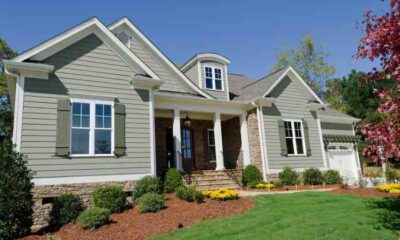
 General6 months ago
General6 months agoFinding the Best Siding Contractors Near Me: A Comprehensive Guide
-

 General6 months ago
General6 months agoExploring the World of Interiors
-
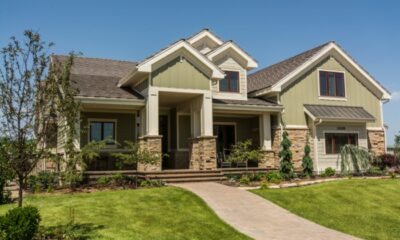
 General6 months ago
General6 months agoEnhancing Your Home: Custom Home Exteriors
-

 General6 months ago
General6 months agoExploring the Roof Replacement Cost Estimate: Factors, Materials, and Labor
-
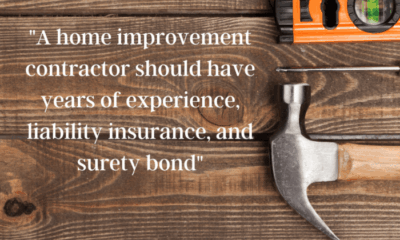
 General6 months ago
General6 months agoThe Ultimate Guide to Licensed Home Improvement Contractors
-

 General6 months ago
General6 months agoExploring the Beauty of Hardie Cobblestone
-

 Architecture6 months ago
Architecture6 months agoExploring the World of Interior Architecture
-
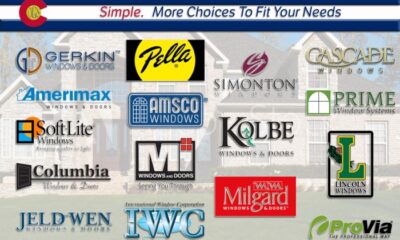
 General6 months ago
General6 months agoExploring the Best Replacement Window Companies for Your Home





